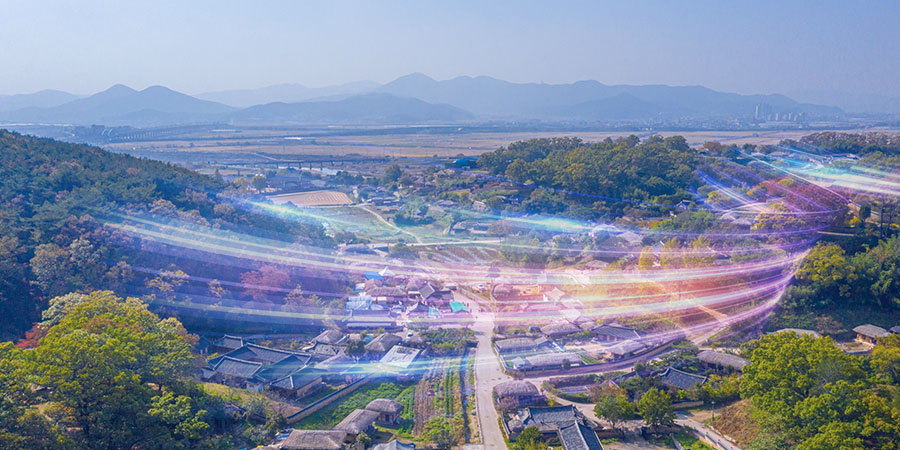The Asia Pacific is home to some of the world’s most digitally connected countries as well as some of the least connected. According to a report, internet penetration rates vary widely across the region, with countries like South Korea, Japan, and Singapore boasting nearly universal internet access, while nations like Myanmar, Papua New Guinea, and several Pacific Island countries exhibit limited connectivity.
As of 2021, digital trends indicated a growing number of internet users in the Asia Pacific, driven by the expansion of mobile networks and affordable smartphones. The United Nations Economic and Social Commission for Asia and the Pacific (UNESCAP) has highlighted that the region’s internet usage has seen substantial growth, yet significant disparities remain between urban and rural areas, and among different socio-economic groups.
Telecom Review Asia Exclusive Feature: How Tech Investments are Accelerating Asia’s Digital Economy
Impact on Economic Development
Internet penetration has a direct correlation with economic development. Enhanced connectivity facilitates business operations, boosts productivity, and opens up new markets. The Asian Development Bank (ADB) emphasizes that digital technology, including widespread internet access, plays a crucial role in economic modernization and competitiveness. For instance, e-commerce platforms have enabled small and medium-sized enterprises (SMEs) to reach global markets, thus, contributing to GDP growth.
Countries with high internet penetration have seen substantial economic benefits. South Korea, for instance, has leveraged its high-speed internet infrastructure to become a global leader in technology and innovation. Conversely, countries with low internet penetration struggle to keep up with the digital economy, resulting in slower economic growth and fewer opportunities for their populations.
The Asia Pacific region is witnessing remarkable economic development driven by strategic initiatives and collaborations aimed at enhancing internet penetration. A significant milestone in this regard is the DE-CIX Jakarta Internet Exchange, which went live in May 2024. The internet exchange is enhancing Indonesia’s internet infrastructure, thereby facilitating smoother and faster internet traffic. This improvement not only benefits local businesses by providing more reliable internet connections but also attracts international investments, fostering economic growth.
Similarly, Starlink is set to illuminate Indonesia with high-speed internet, exemplifying the push towards expanding internet access to remote and underserved areas. By introducing satellite internet, Starlink aims to bridge the digital divide, enabling residents and businesses in rural regions to participate more actively in the digital economy. This increased connectivity supports local entrepreneurship, education, and healthcare, contributing to overall economic development.
Thailand’s Village Broadband Internet (Net Pracharat) project is another critical initiative, focusing on extending the National Broadband Network to every village across the country. By ensuring that even the most remote communities have access to high-speed internet, this project empowers individuals and businesses with new opportunities for growth, thus, driving the nation’s digital economy forward.
In Indonesia, the launch of the Bitera Data Center marks a significant investment in digital infrastructure. This facility enhances data storage and processing capabilities, supporting local enterprises and attracting global tech companies to the region. The improved digital infrastructure is crucial for economic development as it enables businesses to scale operations, innovate, and compete globally.
The strategic partnership between Telkom Indonesia and Indosat Ooredoo Hutchison is also a noteworthy development. By combining resources and expertise, these companies are bolstering Indonesia’s internet infrastructure, ensuring more robust and widespread connectivity.
Moreover, Maxis’ launch of a regional internet hub in East Malaysia in 2023 underscores the ongoing efforts to improve internet access in less connected areas. This initiative is expected to boost local economies by providing better connectivity for businesses and residents, thereby supporting regional development and integration into the broader digital economy.
Interesting Read: Mobile Internet Use Among Women in LMICs Surges by 120 Million
Social Implications and Inclusion
Beyond economic impacts, internet access plays a vital role in social inclusion and development. During the COVID-19 pandemic, the digital divide became starkly apparent, affecting access to education, healthcare, and social services. A report by UNESCAP detailed how the lack of internet connectivity exacerbated social inequalities, leaving marginalized groups further behind.
In education, for example, countries with robust internet infrastructure were able to transition to online learning more effectively, ensuring continuity in education. In contrast, students in regions with poor connectivity faced significant disruptions, highlighting the importance of universal internet access in achieving equitable educational outcomes.
The link between education and internet connectivity in the Asia Pacific is being significantly strengthened through various strategic initiatives and collaborations. In 2022, ZTE and Multimedia University (MMU) embarked on a groundbreaking project to build Malaysia’s first 5G Standalone (SA) system dedicated to education.
In the Philippines, SES and ComClark are making strides in delivering educational content via satellite, particularly to remote and underserved areas. This initiative ensures that students in even the most isolated regions have access to high-quality educational materials and resources.
Singapore’s collaboration with NVIDIA to launch AI training for students further exemplifies the region’s commitment to integrating cutting-edge technology into education.
In 2024, CelcomDigi unveiled a new AI Experience Centre, aiming to provide hands-on learning opportunities and exposure to artificial intelligence technologies.
Maxis’ partnership with the Penang Government to advance digital skills further highlights the region’s focus on digital education. This collaboration aims to enhance digital literacy and skills among students and educators, ensuring that the local workforce is well-prepared for the evolving demands of the digital economy.
Internet penetration also significantly impacts healthcare delivery and public services. Telemedicine, digital health records, and online health information platforms have become critical components of modern healthcare systems. According to a report by the International Telecommunication Union (ITU), countries with better internet connectivity have been able to provide more comprehensive healthcare services, especially in remote and underserved areas.
Dialog Enterprise and Durdans Hospital, for instance, have deployed Software-Defined Wide Area Network (SD-WAN) technology to transform healthcare connectivity. This initiative aims to provide a reliable, high-speed network that connects multiple healthcare facilities seamlessly.
In Macau, CTM and iMeddy have officially launched the “Dr.Easy” smart healthcare platform, which utilizes artificial intelligence (AI) to promote the development of smart healthcare. This platform enables remote consultations, digital health records, and real-time monitoring, making healthcare services more accessible and efficient.
In countries like India and Indonesia, digital health initiatives have improved access to medical advice and services, reducing the burden on physical health facilities and making healthcare more accessible to rural populations. This digital transformation in healthcare is a testament to the broader benefits of internet penetration on public service efficiency and quality.
Also Read: Advancing Digital Inclusion Efforts and ICT Development in the Philippines
Challenges and Future Prospects
Despite the clear benefits, several challenges hinder the expansion of internet connectivity in the Asia Pacific. These include infrastructural deficits, high costs of internet services, regulatory hurdles, and socio-political factors. The digital divide remains a significant barrier, with rural and remote areas often being left out of the digital revolution.
Moreover, digital literacy is a critical issue. Access to the internet alone is insufficient if populations lack the skills to use digital tools effectively. Initiatives aimed at improving digital literacy are essential to ensure that internet penetration translates into meaningful socio-economic development.
Looking ahead, the future of internet penetration in the Asia Pacific appears promising, with various initiatives and investments aimed at bridging the digital divide. Kearney’s report on building an internet for the future of Southeast Asia outlines several strategic recommendations for enhancing connectivity, including public-private partnerships, investments in digital infrastructure, and policy reforms to create an enabling environment for digital growth.
Related: Assessing the Role of Public-Private Partnerships in Telecom Infrastructure Development
Investment in broadband infrastructure, particularly in underserved areas, is crucial. Governments and private sector players must collaborate to deploy affordable and reliable internet services. Additionally, policies that promote digital literacy and skills development are essential to ensure that all segments of the population can benefit from internet access.
International organizations, such as the UN and ADB, play a vital role in supporting these efforts through funding, technical assistance, and policy guidance. Their involvement can help ensure that internet expansion efforts are inclusive and sustainable, ultimately contributing to the region’s socio-economic development.
Latest Industry News: GSMA Predicts Asia-Pacific Mobile Industry to Top USD 1 Trillion by 2030







